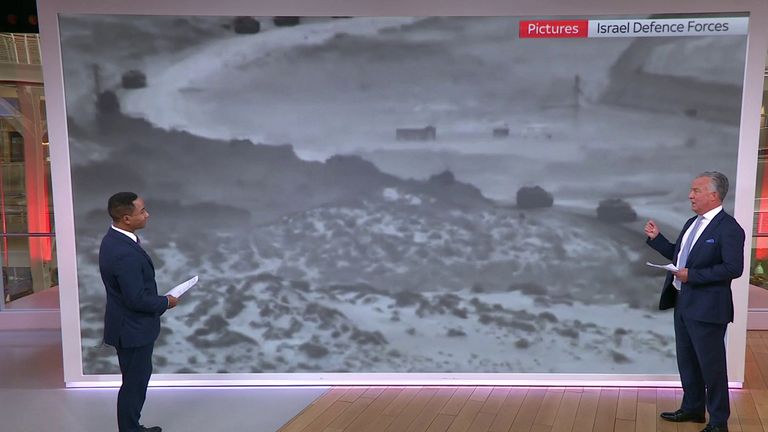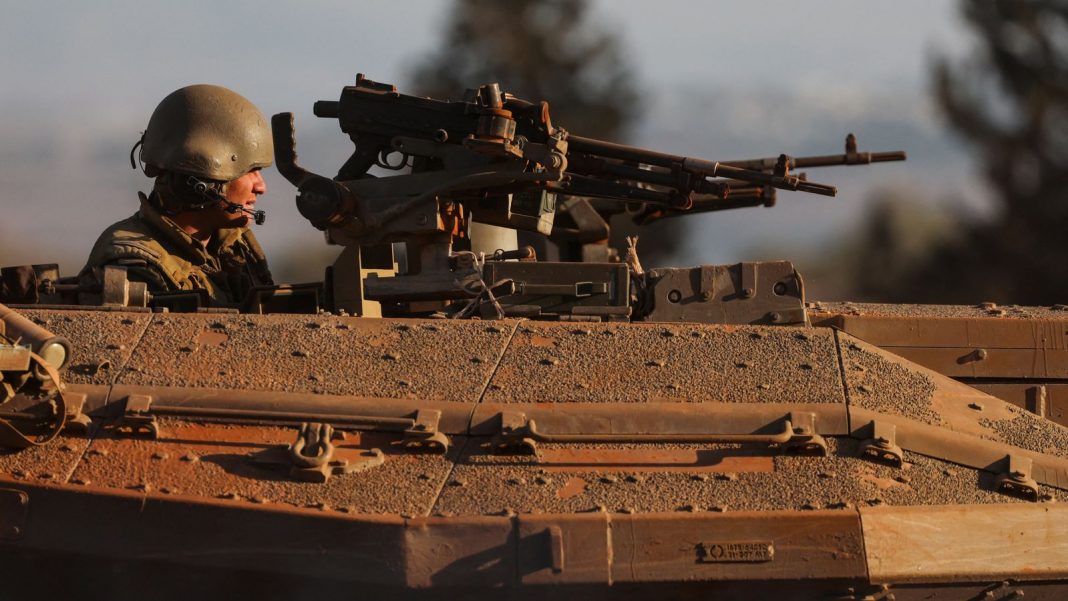Israel will carry out more limited incursions into Gaza before any attempt at a full-scale invasion.
Commanders have said that their war against Hamas, which controls the Palestinian enclave, will be different to any of the previous conflicts between the two foes.
It has already been notably different in terms of scale, with an unprecedented barrage of aerial bombardments levelling large areas of the territory, with thousands of civilians killed and wounded, and large portions of the population forced to flee their homes.
Follow live: Gaza releases documents containing ‘names of 7,000 Palestinians killed’
The number of military personnel involved in the campaign is also on a new level, with some 360,000 Israeli reservists called up to serve in the wake of a killing and kidnapping rampage by Hamas in southern Israel on 7 October that triggered the war.
Smoke rises from an Israeli airstrike in Rafah, in the Gaza Strip.
Pic: AP
In addition, Israel says its offensive will use a combination of air, sea and land operations as its military hunts down Hamas fighters, hidden among the civilian population.
But the mission is filled with risk given the need to enter an urban area – one of the most difficult types of terrains to attack, though many buildings have been reduced the rubble.
Also, if the experience of the United States and its allies in fighting an Islamist extremist movement is anything to go by, it will be impossible to achieve the stated aim of destroying Hamas through military force alone.
Still, warfighting is the key focus as Israel scrambles to respond to rebuild its own security after the carnage unleashed by Hamas across communities that live close to Gaza.
Israeli combat troops in tanks and bulldozers punched across the border into a northern portion of the territory overnight on Wednesday into Thursday.
They only ventured less than a kilometre into the terrain for a few hours, firing on what the Israel Defence Forces (IDF) said was Hamas infrastructure such as a network of underground tunnels used by the militants to evade Israeli drones and airstrikes.
Please use Chrome browser for a more accessible video player

3:45
Israeli tanks and troops enter Gaza
The Israeli raiding party then pulled out, with a return to a steady tempo of airstrikes and artillery fired from a distance hitting Gaza during the day on Thursday.
However, further night-time raids will likely take place in the coming days as Israel seeks to weaken Hamas’s defences ahead of a major ground assault.
Read more:
All civilian hostages could be freed from Gaza ‘in days’
Israeli troops will also be looking to find any information possible about the fate of more than 220 hostages, including children and foreigners, who were snatched almost three weeks ago and are still being held captive in Gaza.
External pressure from allies, such as the US, the UK and France, to ensure time for negotiation efforts to free the hostages will be playing into the Israeli calculations.
As will concerns about the risk of a ground invasion into Gaza, opening up new fronts with other enemies in the region, principally Iranian-backed Hezbollah in Lebanon.
But, Wednesday night’s incursion shows that Israel is still ready to push forward despite the risks. The main question is how long it can wait before making a much bigger move.







